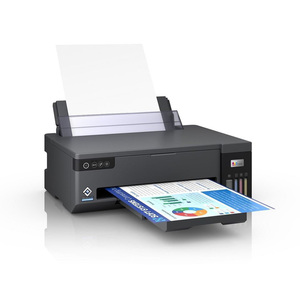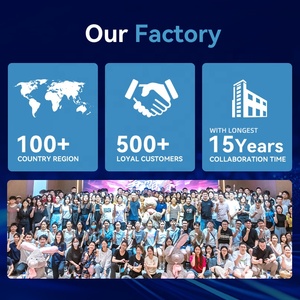(121950 products available)
















































































































































































































A cmyk printer is a device that employs cyan, magenta, yellow, and black in its ink mixing process. Commonly known as the four-color process, the set is referred to as CMYK. The following are the types of Cyan, Magenta, Yellow, and Key (CMYK) printers:
An inkjet CMYK printer utilizes liquid ink. It sprays microscopic ink droplets through its print head onto paper. Inkjet printers are known for their ability to produce high-quality images and photographs. The color saturation achieved with this device is quite impressive.
This printer is also versatile. It can print on a variety of materials. For instance, photo paper, plain paper, and cardstock. It can also produce vivid colors with great accuracy. This makes it ideal for users wanting to print professional-quality marketing materials, brochures, and more.
These printers employ a different technique than inkjet printers. They use toner cartridges that are a fine powder. The CMYK laser printers create sharp and crisp text. They are especially recommended for business environments where large volumes of documents need to be printed daily.
They are also known for their speed and efficiency. Moreover, this printer type is good with cost-effectiveness when printing large quantities. However, their color matching may not be as precise as that of inkjet printers.
These printers, also known as multifunction printers, can print, scan, copy, and fax. An all-in-one CMYK printer is convenient in that it consolidates all these functions into one device.
It employs both inkjet and laser technology for color and black-and-white printing. It can handle various printing needs, from simple document prints to vibrant colored ones.
Sub printers utilize a process called dye-sublimation. In this process, dye is transferred to fabrics and other materials. This printer is designed for printing on custom apparel, and mugs, and doing other photography jobs. The prints are vivid and long-lasting.
These are designed to print large-scale graphics. They can do anything from banners and posters to signage. Wide-format printers employ either inkjet or printhead technology. This enables them to handle media that is up 24 inches wide.
They are commonly used in commercial printing businesses and graphic design studios. This is because they can create eye-catching, large-scale visuals with accurate color reproductions.
Understanding the areas where the cmyk color printer is used helps to understand its significance. The following are its applications:
Cmyk printers are extensively used for creating labels, boxes, and wrappers. This is because they can produce striking and accurate colors that are vital for branding. The process of employing CMYK in packaging is a digital one and is conducted through the use of a digital press.
The detailed color control ensures that the package designs are consistent. This raises a consumer's perception of quality and aids in bringing attention to the items on store shelves.
In the commercial printing realm, CMYK printers are vital for producing newspapers and magazines. This is because they can swiftly print large quantities of materials without sacrificing color accuracy. This is very important for publications where vivid images and dynamic layouts are crucial to attract readership.
As noted above, efficiency is a critical aspect of commercial printing operations. Most of these operations are based on CMYK color to ensure rapid, high-quality output.
These are used for billboards, banners, and other signage. In this case, large-scale printing takes advantage of CMYK printers to create eye-catching imagery. These printers can reproduce detailed photographs and graphics.
This means that the signs are striking and visible. The visibility is what the advertising and event industries look for, especially when marketing products and services.
Textile printing has also utilized CMYK printers. They are used to create striking and multicolored designs on fabrics. The CMYK process enables designers to transfer their complex patterns and images onto clothes.
This has resulted in innovative designs. It is important to note that the CMYK printers used in textile printing are different. They are equipped with unique inks that are more permanent than the ordinary CMYK inks.
The label printing industry mostly uses CMYK printers. These printers can create labels with vibrant colors and intricate designs. This makes them suitable for various industries like food and beverages, retail, and manufacturing.
These industries need custom labels to promote their products. The versatility of CMYK enables label printers to produce a wide range of label sizes and designs. They will thus cater to different business needs.
What separates CMYK printers from others and their functionality is governed by several features. They include:
Resolution is measured in DPI or dots per inch. Higher resolutions allow printers to produce clearer and more detailed prints. Most CMYK printers come with adjustable resolutions. This makes them suitable for printing high-quality photos and standard documents alike.
A printer's speed determines how many pages it can print in one minute. CMYK printers meant for home use have a speed of 5 - 20 ppm. The printers intended for commercial uses can have speeds of over 100 ppm.
The CMYK printers that have speeds are ideal for users who need to print in bulk. For users who do not need to print large quantities, average-speed printers will do since they are more affordable.
Modern CMYK printers are designed with various connectivity options. They can connect to networks, staff, and various devices. These options include Wi-Fi, Ethernet, and USB. Some advanced printers even have built-in capabilities for printing directly from mobile devices.
Different CMYK printers support various paper sizes and types. Customers can choose from the wide-format printers to those that support media like photo paper, cardstock, and envelopes.
Some even have multiple paper trays. These printers allow users to switch between different paper types without much hassle. It is also crucial to consider the maximum paper size a printer can handle.
CMYK printers use cartridges in most cases. While a few use inktanks that can be refillable. Inktank printers have larger ink reservoirs than regular cartridges. This means they can print larger quantities and have lower ink replacement costs.
These are the other features that define a Color, Magenta, Yellow, and Key (CMYK) printer:
The maximum monthly duty cycle is the number of pages that a CMYK printer can print within a month. This is usually according to the manufacturer. Most printers can go for longer with adequate maintenance.
Color accuracy determines the printer's ability to reproduce desired colors. On the other hand, color gamut refers to the range of colors a printer can produce. A printer will provide better results if it has higher color accuracy and an extensive color gamut.
Customers will need to ensure that their CMYK printer is compatible with their operating system. This is especially true for those that will connect the printer to laptops and computers. Most printers support popular operating systems like Windows and macOS.
This refers to how much it will cost to replace cartridges or tanks over time. Some CMYK printers have high cartridge costs. While others have lower costs for ink refills. It also applies to paper and other accessories that may need constant replacement.
It is vital to consider the following factors the next time buyers are selecting CMYK printers for sell:
Consider the expected printing volume and frequency. This will assist in selecting a printer that will handle the required tasks. High-volume printing demands a printer with a larger ink capacity and faster output speeds.
Low-volume tasks can be managed with standard home office printers. Knowing printing needs helps avoid overloading or underutilizing a printer.
Printers may be affordable, but replacing their inks can cost a fortune. That is why it is important to consider how much the replacement inks will cost. They should be low-cost if selling to clients who print numerous documents. High-quantity printing will be supported with printers that have high-capacity ink tanks.
Buyers who are interested in getting CMYK printers should consider those that are the latest models from reputable brands. These brands have established themselves over time with durable printers. Moreover, they come with customer support if any issues arise.
To enhance their print technology, some of these brands often release firmware updates. This helps to improve the printer's performance and security.
There are four main types of CMYK printers, and each suits certain tasks. For instance, inkjet printers produce high-quality photos, while laser printers quickly produce colored documents. On the other hand, CMYK all-in-one printers combine several features into one device to manage various tasks.
Finally, wide-format CMYK printers can print large advertisements and banners. It is important to choose the type that meets the printing needs and requirements of clients.
Noise levels can be disruptive in quiet environments such as schools and offices. Laser printers are the least noisy, producing around 30 decibels when printing. In comparison, inkjet printers produce approximately 50 decibels while printing. It is worth noting that the noise levels will further increase when the printer is warming up or scanning.
Modern CMYK printers offer a variety of connectivity options beyond traditional USB. Many have built-in Wi-Fi. This allows for wireless printing from various devices, including smartphones and tablets. Some printers even support Ethernet connections for integration into office networks.
There are also models with mobile printing capabilities. This enables printing directly from applications on mobile devices. Cloud printing is yet another feature that many new printers include.
It allows users to send print jobs from anywhere with an internet connection. Selecting a printer with the desired connectivity options is essential. It ensures seamless integration into existing workflows.
A1. A cmy printer uses four ink colors: cyan, magenta, yellow, and black. These inks are called the four-color process. The printer mixes these colors in varying amounts to create different color shades. It does this by adding tiny dots of each ink on the paper. This technique is known as color separation or halftoning.
A2. CMYK stands for cyan, magenta, yellow, and key or black. It is the ink set used in this printer. These are the primary ink colors for printing. The printer utilizes them to create a broad spectrum of colors through blending.
A3. The cmy vs. rgb difference is in how each models colors. The CMYK printer uses cyan, magenta, yellow, and black to produce colors. On the other hand, RGB printers use red, green, and blue to create colors. They capture and display colors of photographs. CMYK printers are ideal for printing. RGB printers are more suitable for display screens. This is because they provide more vivid colors for digital displays.
A4. CMYK printers are crucial to blending colors for accurate image reproduction. They can produce bright colors while maintaining accuracy. These printers are versatile and cater to different printing needs. Users can enjoy consistent and reliable performance from them. They are especially suitable for high-quality professional printing applications.